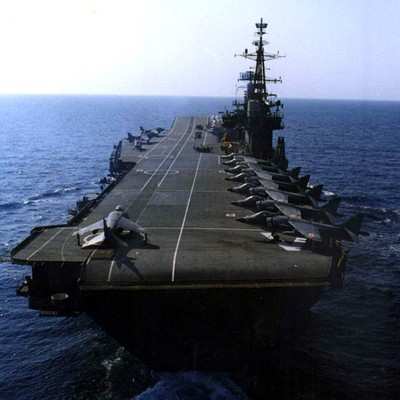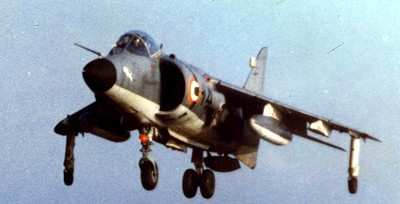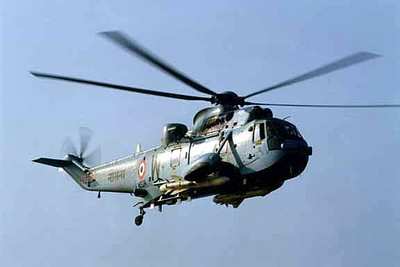Wed, Feb 09, 2005
1998 Embargo Lifted on Harrier, Sikorsky SH-3 Parts
The Indian Navy's Sea Harrier and SH-3 helicopter fleets have
suffered serious spare parts availability problems since the US
imposed sanctions after India's 1998 nuclear test. At times, as
many as 30 to 40-percent of Indian aircraft have been grounded
because of the spares shortages, according to Indian Navy Vice
Chief of Naval Staff Admiral John DeSilva.

The Sea Harriers are the Navy's only combat airplanes, providing
fleet defense and striking power; the Sea King helicopters are
vital to protecting India's growing fleet from hostile submarines.
The Sea Kings are American Sikorsky machines, and the Harriers were
built by an Anglo-American partnership and incorporate many
American components that require periodic servicing.

The word "sanctions" makes everyone think of a total embargo,
but in this case supply was never completely cut off. Instead,
Indian procurement officers had to work through British
intermediaries who had to get individual authorizations to
re-export United States-sourced products to India. This took time
and added a lot of "hurry up and wait" to the Indian naval-aviation
supply system.
While the Indian officers welcome the ability to buy direct,
rather than endure indirect and unresponsive supply lines, the
sanctions experience has made them leery of the USA as a supplier.
The US, however, has three desires: one, to reward India for its
cooperation in the war, which continues out of the public eye; two,
to continue the improvements in bilateral relations begun in 2001;
three, and perhaps most important, to gain a toehold in the growing
Indian arms market.

India's traditional arms suppliers, Russia and France, can
supply many things, but not advanced VSTOL aircraft that will
follow the Harrier in US and European service. The US for its part
would welcome another partner to share the cost -- and the risk --
for the V-35 VSTOL variant. Despite the definite differences
between these nations, the common interests of these two populous
and well-established free nations will continue to bring them
together.
More News
Have A Story That NEEDS To Be Featured On Aero-News? Here’s How To Submit A Story To Our Team Some of the greatest new stories ANN has ever covered have been submitted by our>[...]
“The legislation now includes a task force with industry representation ensuring that we have a seat at the table and our voice will be heard as conversations about the futur>[...]
Aero Linx: Waco Museum The WACO Historical Society, in addition to preserving aviation's past, is also dedicated and actively works to nurture aviation's future through its Learnin>[...]
Adcock Range National low-frequency radio navigation system (c.1930-c.1950) replaced by an omnirange (VOR) system. It consisted of four segmented quadrants broadcasting Morse Code >[...]
Also: uAvionix AV-Link, Does Simming Make Better Pilots?, World Games, AMA National Fun Fly Czech sportplane manufacturer Direct Fly has finished delivering its 200th ALTO NG, the >[...]
 ANN FAQ: Submit a News Story!
ANN FAQ: Submit a News Story! Aero-News: Quote of the Day (06.12.24)
Aero-News: Quote of the Day (06.12.24) ANN's Daily Aero-Linx (06.12.24)
ANN's Daily Aero-Linx (06.12.24) ANN's Daily Aero-Term (06.12.24): Adcock Range
ANN's Daily Aero-Term (06.12.24): Adcock Range Airborne Affordable Flyers 06.06.24: 200th ALTO, Rotax SB, Risen 916iSV
Airborne Affordable Flyers 06.06.24: 200th ALTO, Rotax SB, Risen 916iSV





